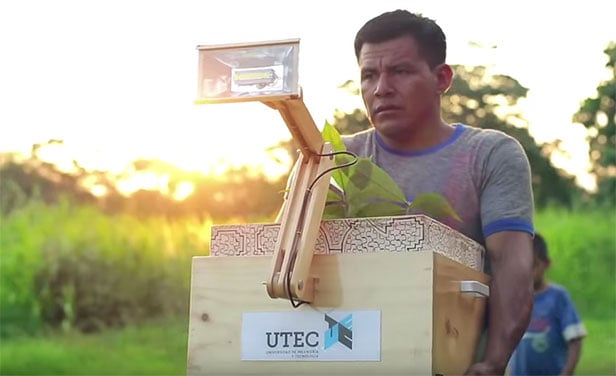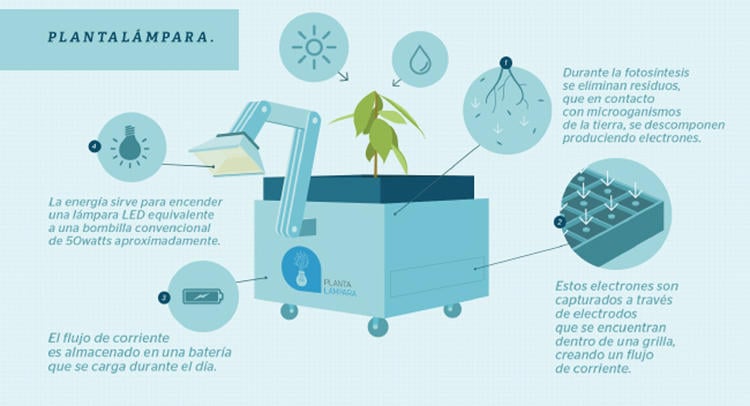
Access to electricity has always been sketchy for the 173 residents of Nuevo Saposoa, a remote village in Peru, S.America. However, things went from bad to worse in March 2015 after a flood damaged the few power cables in the area. The villagers were forced to turn to kerosene lamps, which are not only expensive but also dangerous because of the toxic fumes they emit.
Fortunately, the researchers and students at the Universidad de Ingeniería y Tecnología (UTEC) in Lima, Peru heard about their plight and came up with an ingenious solution. They designed a lamp that can be powered by plants and soil, both of which can be found in abundance in the Amazonian rainforests where the village is located. Called Plantalámparas or 'lamp that runs on plant power', the Wall-E look-alike draws energy from a plant growing in a wooden box and uses it to light up an LED bulb.

While that may sound complicated and even impossible, it is quite straightforward. During the process of photosynthesis, the waste produced by plants gets deposited in the soil. Thanks to the microorganisms present, it decomposes and undergoes oxidization, which produces electrons. The UTEC team placed electrodes inside the soil to harness the energy and store it in the lamp's batteries for later use. The researchers say a single charge can light an LED bulb that has the equivalent output of a 50-watt incandescent bulb for two hours - Enough time for residents to get their evening chores done.
The University distributed ten prototypes of Plantalámparas to the residents of Nuevo Saposoa in October 2015. So far, they have been a huge success! Elmer Ramirez, UTEC's professor of Energy and Power Engineering, who spearheaded the effort believes the plant powered lamps could also help improve the lives of thousands of other rural rainforest communities, 42% of whom have no access to electricity.

This is not the first time the students and professors of UTEC have come up with a brilliant solution to a problem. In 2014, to combat Peru's severe air pollution they created a giant billboard that doubled up as an air purifier!
Resources: fastcompany.com,utec.pe.edu,slate.com, photos courtesy of UTEC